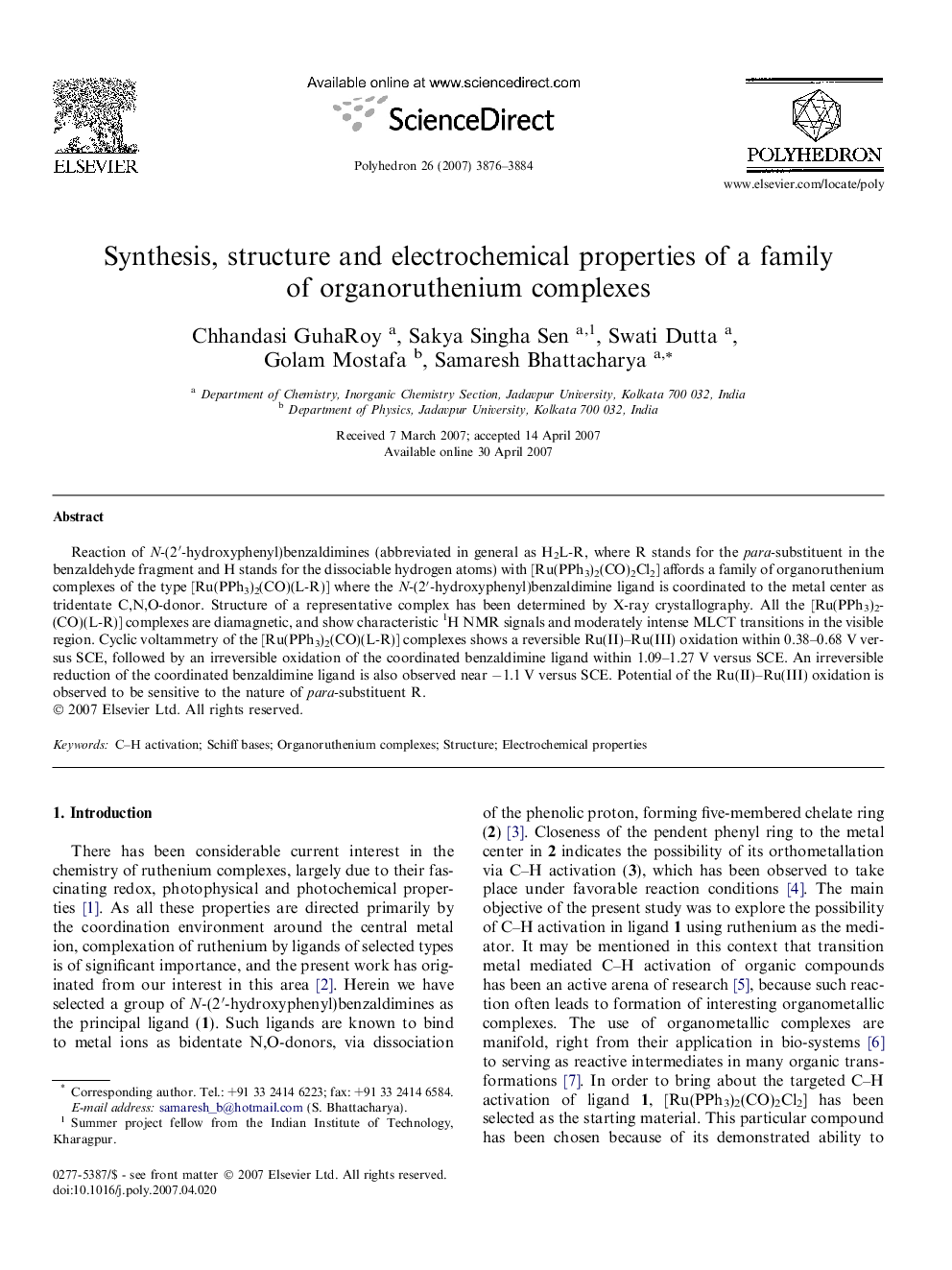| Article ID | Journal | Published Year | Pages | File Type |
|---|---|---|---|---|
| 1339767 | Polyhedron | 2007 | 9 Pages |
Reaction of N-(2′-hydroxyphenyl)benzaldimines (abbreviated in general as H2L-R, where R stands for the para-substituent in the benzaldehyde fragment and H stands for the dissociable hydrogen atoms) with [Ru(PPh3)2(CO)2Cl2] affords a family of organoruthenium complexes of the type [Ru(PPh3)2(CO)(L-R)] where the N-(2′-hydroxyphenyl)benzaldimine ligand is coordinated to the metal center as tridentate C,N,O-donor. Structure of a representative complex has been determined by X-ray crystallography. All the [Ru(PPh3)2(CO)(L-R)] complexes are diamagnetic, and show characteristic 1H NMR signals and moderately intense MLCT transitions in the visible region. Cyclic voltammetry of the [Ru(PPh3)2(CO)(L-R)] complexes shows a reversible Ru(II)–Ru(III) oxidation within 0.38–0.68 V versus SCE, followed by an irreversible oxidation of the coordinated benzaldimine ligand within 1.09–1.27 V versus SCE. An irreversible reduction of the coordinated benzaldimine ligand is also observed near −1.1 V versus SCE. Potential of the Ru(II)–Ru(III) oxidation is observed to be sensitive to the nature of para-substituent R.
Graphical abstractReaction of a group of N-(2′-hydroxyphenyl)benzaldimines (1) with [Ru(PPh3)2(CO)2Cl2] in refluxing 2-methoxyethanol in the presence of a triethylamine afforded a family of organoruthenium complexes (2) in which the benzaldimine ligands are coordinated to the metal center, via C–H activation, as dianionic tridentate C,N,O-donors.Figure optionsDownload full-size imageDownload as PowerPoint slide
